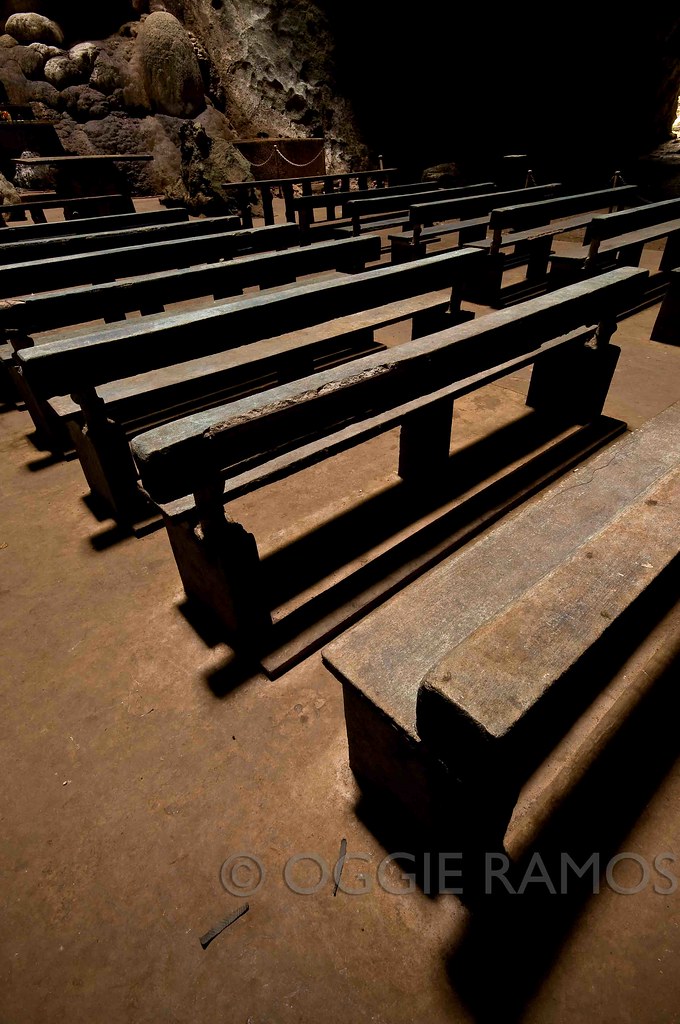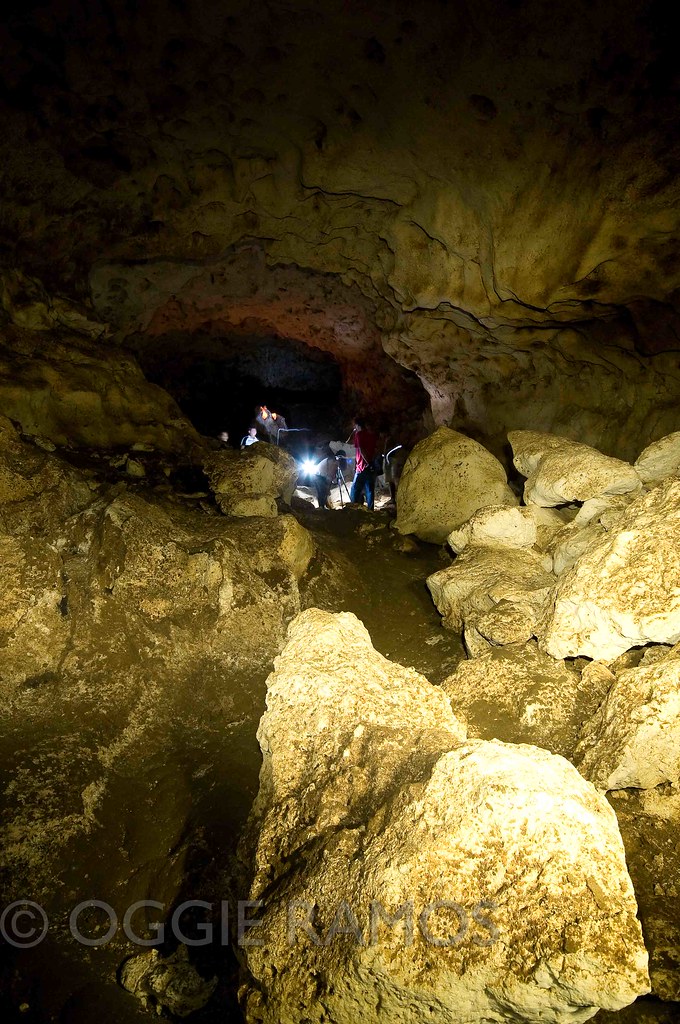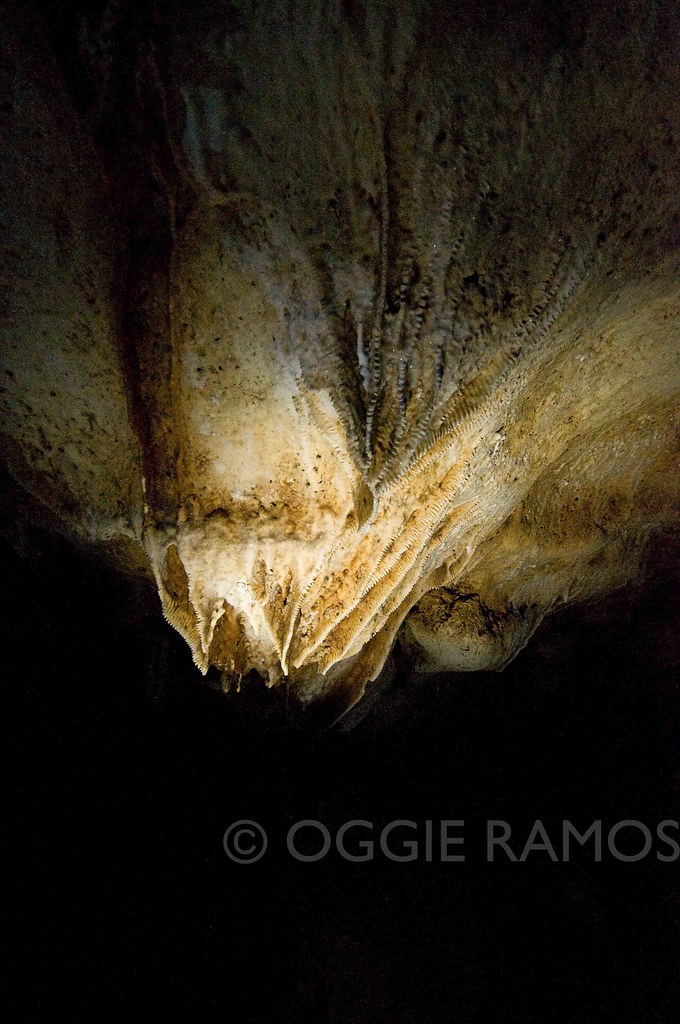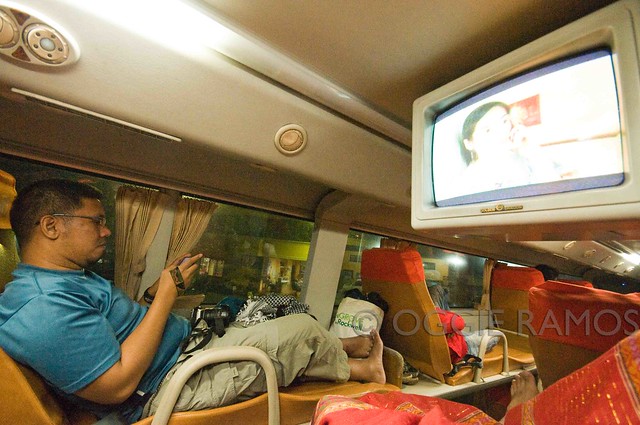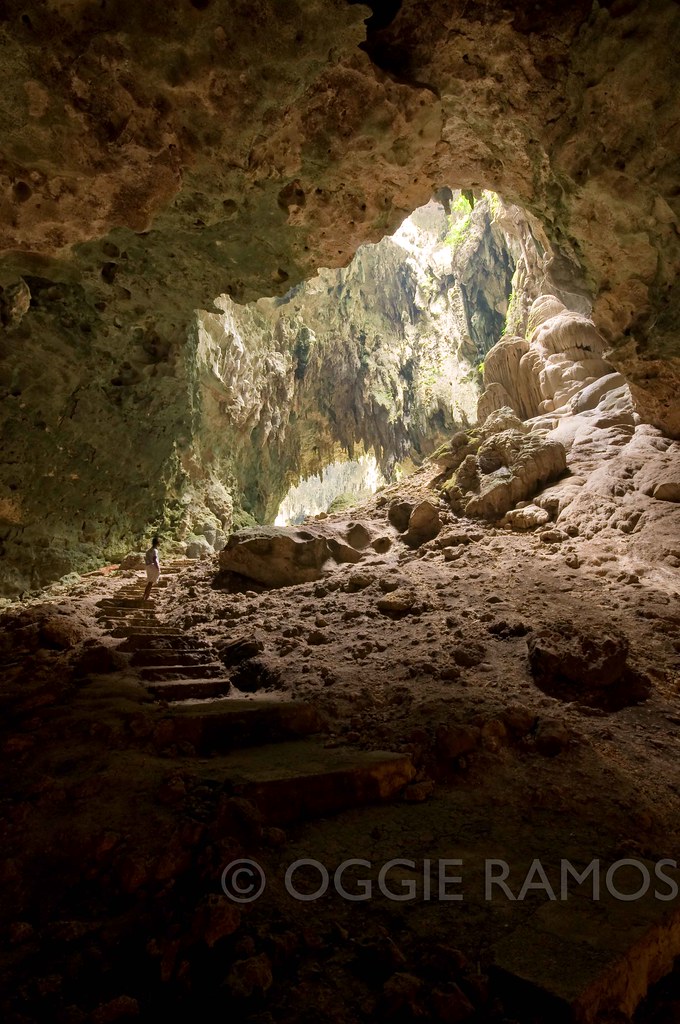 |
| Callao Cave - Andoy looking up |
After sunshiny, blue-sky days, the weather turned moody and grey. While friends in Manila were tweeting about the heat, here we are eating an early lunch under the rain. Later, we caught the express van to Tuguegarao under a squall.
We decided to go back to Manila via another route. But having a day to spare, we spent a night in Tuguegarao. The van trip took over three hours and arriving at past mid-afternoon to a surprisingly cool city, we deferred caving to the next day. The last time I was here was in 2006 and it seems to me that Tuguegarao has more tricycles than ever clogging the main and side streets. The next day, the very kind folks at the tourism office gave us a warm welcome and a ride to Peñablanca.
Prized finds - one 67,000 years old and another five years ago. My biggest surprise coming back to Callao wasn't finding out that a multinational team discovered the remains of hominids dating back 65,000 years at the mouth of cave entrance in 2007. It's finding Andoy, my guide five years ago, still there. Last time I saw him, he was just 6 years old, the youngest guide in the Philippines. He's grown up now sharing the same interests of tweens his age -- Facebook and network games. In our banter, he showed a sharp mind as well as a budding interest in photography.
With its towering, non-claustrophobia-inducing chambers, Callao Cave is oft-visited by tourists. Its beauty, however, lies not just in its physical features but its historical significance. In April 2007, a human toe bone was discovered by archeologists here, "the oldest human remain ever found in the Philippines as well as East and Southeast Asia" according to the Cagayan Museum literature. Called the Callao Man, he predates the Tabon Man of Palawan by about 2,000 years. Dr. Armand Mijares, the leader of the expedition, reported that the toe bone belongs to a human sharing similarities with the present-day Aetas of Luzon.
Crystal caving. From the spacious caverns of Callao, we plunged into the more confining Sierra Cave. There's a locked gate at the entrance for a good reason -- the cave's stalactites and stalagmites sparkle like gems when they're hit by light beams from our flashlights. As Ted of the tourism office noted, unlike Callao Cave which is considered "dead" with its chalk-like formations, the Sierra Cave is very much alive. The water and minerals seeping through the ceiling are actively and painstakingly building the impressive stalactites and stalagmites, millimeter by millimeter. The textures the minerals form range from what Ted describes as spiky "pretzels" to thin and wavy "bacon".
Being in a cave like this can make one feel small in the grand scheme of creation -- how relatively short we humans have roamed the earth compared to caves that took millennia to grow. Which leads me to my point -- closing the gates to deter thieves and tourists taking home souvenirs that took eons to build is indeed a very good idea.
Info: Callao and Sierra Caves can be reached via private and public transport; around an hour away from Tuguegarao City • Access to Sierra Cave is restricted; permission to enter and explore must first be secured from the DENR and Cagayan Valley Tourism Office • Visitors to Callao Cave are encouraged to get an official guide for safety (Ted shares that snakes are known to wander into the innermost chambers) and to help deter vandalism (I saw Andoy gave a friendly warning to a tween about to write her name on the wall of the second chamber. Tsk tsk.)
Info: Callao and Sierra Caves can be reached via private and public transport; around an hour away from Tuguegarao City • Access to Sierra Cave is restricted; permission to enter and explore must first be secured from the DENR and Cagayan Valley Tourism Office • Visitors to Callao Cave are encouraged to get an official guide for safety (Ted shares that snakes are known to wander into the innermost chambers) and to help deter vandalism (I saw Andoy gave a friendly warning to a tween about to write her name on the wall of the second chamber. Tsk tsk.)
Catching zzzzs on the overnight sleeper. Finally, after a year of looking at the sleeper buses of Florida Transit, we got the chance to ride, nay lie, in one. It's an interesting alternative to buses that let you sleep sitting down. The fare's not cheap at P1,050 (around US$25) but what the hey, lying flat for a nine-hour trip is well worth it. There are flat-screen monitors strategically positioned among the double-deck bunks (I got placed right in front of one) and come midnight, one is mercifully spared from the classic rock/Pinoy novelty tunes that seem de-rigeur on most provincial buses.
Getting up and down the upper bunks takes a bit of getting used to. As a bonus, the airplane-style comfort room located at the back of the bus looks and smells clean. Some words to heed: overnight buses are known as mobile freezers and this one is no different so bring an honest-t0-goodness blanket; there are no stopovers so lug along some snacks and drinks.
Info: We took the Florida sleeper bus from Tuguegarao to Manila; Tuguegarao, the caving capital of the Philippines, can also be reached via air (travel time: less than one hour) • The Florida Bus overnight sleepers currently ply the Tuguegarao-Sampaloc, Manila route once a day at 9:15pm; Fare: P1,050; Travel time: 9 hours with no stopovers; Capacity: 32 passengers divided into upper and lower decks • Lagal[og] thanks: Jeni Baquiran, tourism assistant of the Cagayan Valley Tourism Office and his helpful staff for facilitating our trip to Callao and Sierra Caves.

